Why We Need to Rethink PPE for Women in Industry?
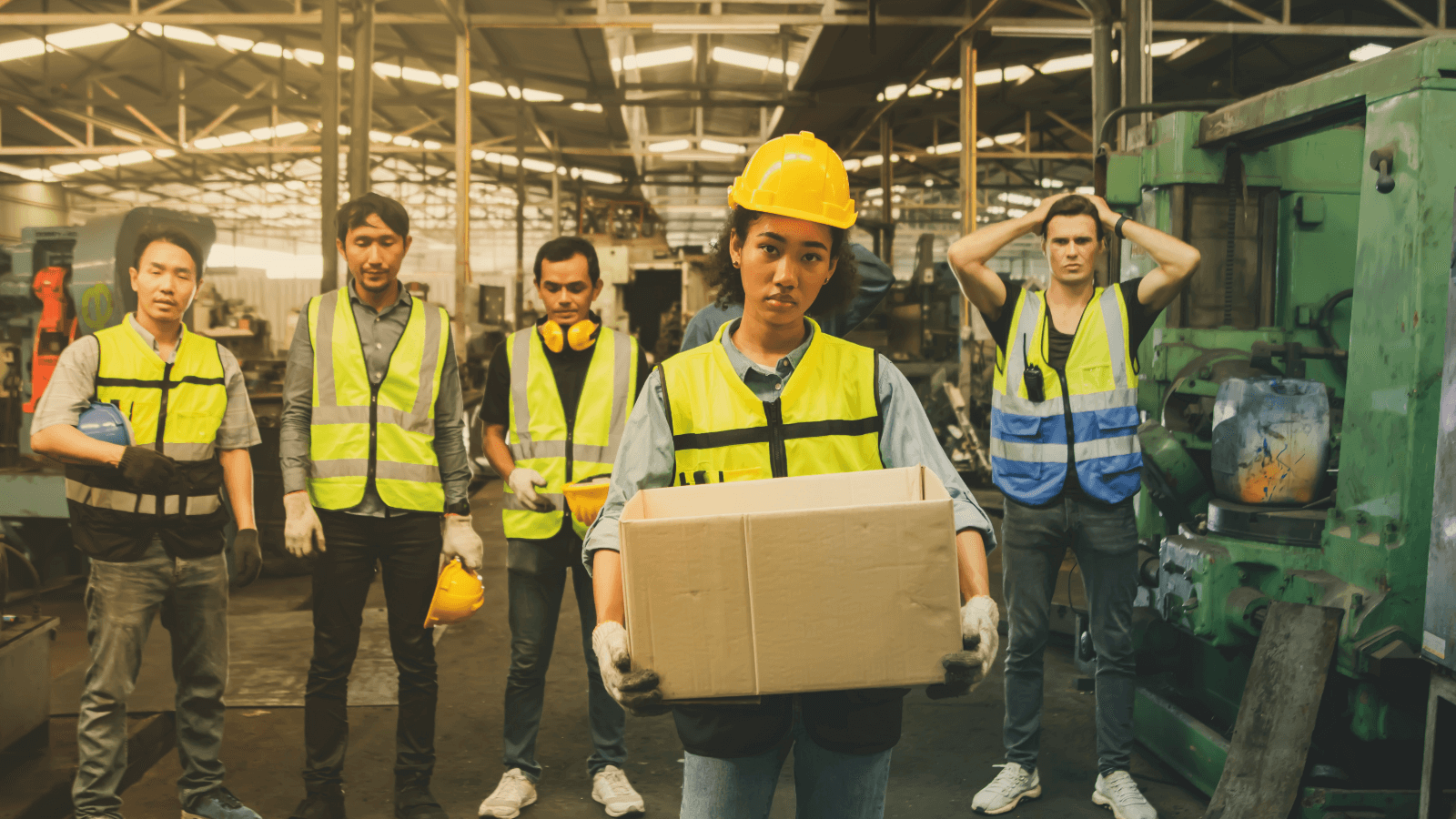
Why We Need to Rethink PPE for Women in Industry?
When we think of personal protective equipment (PPE) in the industrial sector, we will likely picture a bulky suit and helmet on a male worker. However, this image fails to acknowledge the millions of women working in industries that require PPE. Women face unique challenges in the workplace, including ill-fitting PPE and inadequate safety gear, which can expose them to dangerous working conditions.
Despite the pressing need for gender-specific PPE, a recent Women in Global Health study(1) reveals that about three-quarters of the women surveyed experienced problems with PPE fit, and a mere 14% reported using exclusively fit-tested PPE. This alarming finding is a cause for concern as poorly fitting PPE can lead to reduced productivity, injuries, and in severe cases, fatalities. The fact that women face such challenges in obtaining appropriate PPE should be treated as a critical issue that requires our immediate attention to ensure women’s safety at manufacturing facilities.
One Size Does Not Fit All: The Gender Gap in PPE Procurement
The lack of awareness within some organizations of women’s unique PPE needs and female-friendly safety equipment is a primary challenge women face. The all too common “one size fits all” strategy is often employed in PPE procurement, leading to employers neglecting the purchase of PPE designed for women and displaying indifference towards their safety.
Additionally, the male-dominated construction industry culture presents another significant barrier to women’s access to adequately fitting PPE. Women are frequently expected to make do with PPE designed for men, modify their gear, or purchase their PPE outright. This culture of indifference must be challenged, and solutions must be sought to provide female worker safety in the manufacturing sector.
Procuring for Diversity: The Importance of Gender-Specific PPE
The importance of addressing PPE challenges for women cannot be overstated. In many industries, women are exposed to the same risks as men, including exposure to chemicals, heat, and electrical hazards. Without adequate protection, women are at risk of injury or even death. To be effective, the safety-oriented design and production of PPE must cater to the distinct requirements of every gender.
In addition to the moral imperative of ensuring women’s safety, there are practical reasons to address PPE challenges for women. When workers feel safe and protected, they are more likely to be productive and engaged in their work, leading to a more positive and efficient work environment.
Empowering Women with Innovative PPE Solutions: Join the Revolution
Unfortunately, many women still face unique challenges regarding selecting and using PPE in the workplace. To bridge this gap, employers must engage women in the PPE selection process and thoroughly assess their needs.
Thankfully, some manufacturers have recognized the need for gender-specific PPE and are leading the charge toward innovation in this area. Women’s PPE is now being designed to fit the female body shape, with adjustments made for height, waist size, and shoulder width differences. The use of softer materials and more flexible fabrics not only improves comfort and range of motion but also promotes safety.
Moreover, In order increase adoption women’s PPE is now being made more practical and appealing, with various colors, patterns, and form-fitting designs. This is a welcome change as it encourages women to wear their PPE more often, improving safety and reducing the risk of workplace accidents.
At Moglix, you have access to the most comprehensive range of safety supplies and solutions. You can find a range of PPE solutions specifically designed for women at workplace. Contact us today and partner with us to build a safer environment for women.
[Supply Chain Central] Is your business ready for FY23?
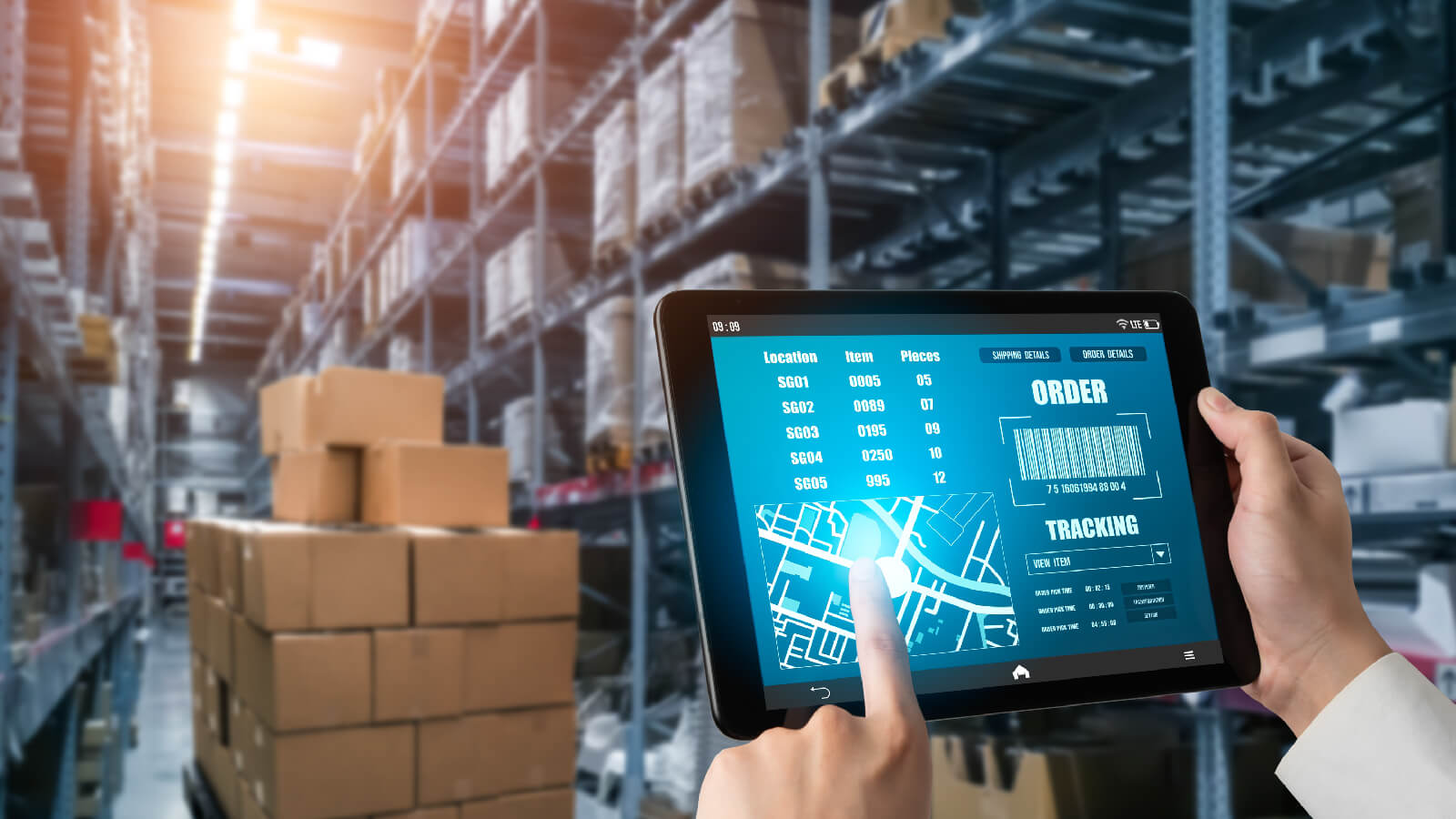
[Supply Chain Central] Is your business ready for FY23?
The year 2023 has arrived, and with it, a new era of supply chain management trends. Businesses must be ready to adapt to these changes to remain competitive in the global market.

As we continue to recover from the pandemic, the supply chain has become even more critical, and many organizations are investing time and resources in supply chain management to mitigate the disruptions of early 2022.
Notably, a recent McKinsey report highlights that 67%(1) of respondents have adopted digital tools for end-to-end supply chain visibility.
This article discusses some key supply chain management trends to watch for in 2023.
Digital Revolution of Supply Chains: The Future is Now
The shift toward digitization may be the most significant trend in supply chain management in 2023. As the world becomes more connected, companies will embrace digitization on a large scale to stay ahead of the competition.
Digitization of supply chains requires implementing the internet of things (IoT), cloud-based networks, artificial intelligence, and machine learning. These digital tools help businesses to track, monitor and analyze every aspect of the supply chain management process.
By adopting these tools, companies can streamline their supply chains, develop new revenue streams, and tap into new markets.
Green is the New Gold: Prioritizing Sustainable Supply Chains
With the rising global emphasis on environmental sustainability, businesses will prioritize sustainable supply chains. Investors, including private equity firms and venture capitalists, are increasingly opting for sustainable organizations in their portfolios.
Thus, companies will look to demonstrate a commitment to sustainability to gain a competitive edge in funding and attracting investors.

To achieve sustainable supply chain operations, businesses will adopt green logistics practices that are environment-friendly. This can include investing in energy-efficient technologies and utilizing sustainable packaging materials.
Environment, Social, and Governance (ESG) focused procurement decisions will also gain momentum for implementing sustainable supply chain management processes.
Don’t Fall Behind: How Partnerships are Changing the Supply Chain Landscape
Don’t miss out on the opportunity to stay ahead of the competition by harnessing the power of supply chain integrations. The year 2023 is expected to witness a proliferation of supply chain components due to many companies pursuing cost reduction and enhanced customer service.
As a result, companies that fail to integrate with third-party service providers risk falling behind.
In 2023, integration with third-party service providers will become common for reducing overall freight expenses and optimizing the supply chain.
Moreover, companies will seek partnerships with other enterprises that leverage digital solutions to improve delivery estimation accuracy and minimize administrative work. This would further enhance the overall efficiency of supply chain management.
Future-proofing Your Supply Chain: Building Risk and Resilience
In today’s complex and unpredictable business environment, managing supply chain risks and building resilience has become a critical priority for companies. These risks can emerge in various forms, from natural disasters that disrupt the flow of goods to cyber-attacks that jeopardize sensitive data.
To address these risks, companies will embrace an array of strategies including the following:
- Supplier diversification– Companies will adopt strategies to mitigate the risks of overreliance on a single supplier. Supplier diversification will become a key priority as companies seek to avoid the impact of supply chain disruptions.
- Localizing production and transportation– Businesses will seek to reduce the distance between the manufacturing plant and end customers and transport goods through local channels, such as short-haul trucking or rail transport.
- Forging non-traditional partnerships– Companies will seek to expand their network of partners to tap into new sources of innovation, secure access to specialized talent, and access new markets.
A robust supply chain design will be adopted to enable quick recovery from adverse events, provide superior customer service, and increase the market share.
Big Data, Big Benefits: Leveraging Big Data and Analytics
Big data and advanced analytics will power the future of the global supply chain. The ability to collect and analyze vast amounts of data will provide greater visibility, synchronized planning and execution, data-driven decision-making, and profitability.

By leveraging these technologies, companies can optimize their supply chains, improve delivery times, and enhance the overall customer experience by identifying patterns and trends. Implementing algorithms and robotics will further drive efficiency and productivity, making big data and analytics the cornerstone of future-proof supply chain operations.
Cybersecurity for the Win: Protecting Your Supply Chain from Modern Threats
As businesses continue to expand their digital footprint, the threat of cybercrime becomes more prevalent. The supply chain, in particular, is increasingly vulnerable to attacks from cybercriminals seeking to gain access to sensitive data.
To safeguard against these threats, companies are adopting a proactive approach to cybersecurity. This includes investing in anti-hacking systems, implementing firewalls, providing employee training, and building stronger relationships with supply chain partners.
Through collaboration and coordinated efforts, businesses are protecting their assets and people from cyber threats, ensuring the resilience of their supply chains.
Reshaping the Map: The Rise of Domestic Self-Sufficiency
Geopolitical tensions have promoted domestic self-sufficiency in material supply and manufacturing.
As nations grow more skeptical of cooperation and interdependence, governments seek to secure the supply chain. They’re exploring domestic production capabilities and ‘friend-shoring’ relationships with like-minded and geographically proximate countries.
This approach provides a more secure supply of goods and mitigates the risk of material unavailability or supply chain disruption due to geopolitical tensions. Thus companies may have to restructure their supply chains in 2023.
Capitalizing on Supply Chain Management Trends 2023
The trends in supply change management in 2023 will transform how businesses operate. At Moglix, we are well-equipped to help companies to navigate these changes, capitalize on opportunities and stay ahead of the curve.
We understand the challenges businesses may face as they seek to adapt to these changes in the supply chain landscape. Contact us to learn more about how we can help your business optimize its supply chain management strategy.
Additional Reading:
Rethinking Procurement: How e-Procurement Solutions Outshine Traditional ERPs!

Rethinking Procurement: How e-Procurement Solutions Outshine Traditional ERPs!
Over the past few years, the procurement industry has experienced a significant transformation due to the widespread adoption of e-commerce and the advancement of the internet. As a result, nearly 68%(1) of B2B buyers now purchase goods online.
More specifically, the procurement preference of B2B buyers has shifted towards dedicated solutions rather than relying on the procurement modules of traditional ERP systems. This shift is happening due to the unique advantages offered by dedicated e-procurement solutions, such as enhanced transparency, increased efficiency, and improved supplier relationships.
This blog will delve deeper into the benefits of using e-procurement solutions.

Competitive Advantages of e-Procurement Solutions
E-Procurement solutions have become increasingly popular among businesses due to their significant competitive advantages over traditional ERP systems. While an ERP system integrates business processes and is generally built for finance departments, it lacks the specialized features required for effective procurement management.
In contrast, an e-procurement solution is designed specifically to manage procurement functions.
So what are the competitive advantages of e-Procurement solutions?
1. Procure Smarter, Not Harder: Leverage Automation with e-Procurement Solutions
Procurement operations can be made more efficient and cost-effective with automation. Unlike ERP systems, which often involve manual processes, e-procurement solutions offer fully integrated and automated processes.
By utilizing the benefits of automation, you can accelerate the procurement process, minimize errors, and streamline the entire digital procurement value chain.
2. Unlock Flexibility with e-Procurement Solutions
Traditional ERP tools can handle basic procurement, but for a broader range of procurement strategies, e-procurement solutions offer more adaptability. These solutions make managing complex proposals that involve multiple geographies, stakeholders, and suppliers easier.
With an e-procurement solution, you can customize and tailor the tool to suit your specific procurement needs.
3. Maximize Cost Savings with Analytics
A recent study by Deloitte found that e-procurement can result in a 60% reduction in operational costs.
4. One Stop Shop for Business Insights: Benefits of Data Consolidation
With the help of a procurement analytics tool in-built into an e-procurement solution, you can transform your organization’s spending practices by obtaining real-time tracking of costs. Better cost monitoring can help allocate resources toward more strategic initiatives.
An e-procurement solution can streamline your business by consolidating key areas such as purchases, sales, inventory, and finance. With all your business data in one place, you can quickly gain valuable insights and make informed decisions without sifting through multiple reports.
Unlike ERP tools, which lack comprehensive data presentation, e-procurement solutions offer a holistic view of your business operations.
5. Stronger Supplier Relationships
An effective e-procurement system can lower transaction costs, decrease supply chain risks, and enhance supplier collaboration and transparency. With better supplier management, your organization can build stronger strategic partnerships while reducing overall risk.

Embrace the Future of Procurement with e-Procurement Solutions
As a result of these advantages, a survey conducted by McKinsey(3) found that CPOs believed that digital procurement could lead to a 40% increase in annual savings, 30-50% less time spent on sourcing, and a 50% reduction in value leakage.
Businesses can unlock numerous benefits by selecting dedicated procurement solutions that enable them to optimize procurement processes, make informed decisions, and build stronger strategic partnerships.
An ideal sourcing solution can help achieve better visibility over the supply chain, reduce procurement costs, and drive business growth. Learn more about Moglix to understand how our sourcing solutions can lead you into the future of B2B commerce and supply chain management.
Additional resources:
1. E-Procurement: Its Future in the Digital World
2. https://www2.deloitte.com/hu/en/events/esemenyek/2021/a-beszerzes-jovoje-2022.html
Mastering the Art of Supplier Relationship Management (SRM): Key Strategies for Sustainable Relationships

Mastering the Art of Supplier Relationship Management (SRM): Key Strategies for Sustainable Relationships
Almost 68%1 of CPOs state that supplier management will be their top priority going forward for achieving strategic business outcomes. This makes most sense, as effective supplier relationship management (SRM) enables businesses to get deeper insights into pricing trends, raise profitability, and improve their cost baselines—at times, by 5–10%2—by innovatively collaborating with their suppliers.
Yet, nearly 49%3 of procurement managers have failed at transforming their supplier relationships. So, how can you avoid their fate and gain greater visibility into your suppliers’ relationships to ensure long-term success?
The Problem With Supplier Relationships
Regrettably, supplier relationships are often marred by an over-emphasis on cost-cutting and a lack of trust. To add fuel to the fire, communication gaps and misalignment of goals worsen this relationship further.
So to effectively deal with these challenges and ensure greater supply chain continuity, firms must focus on building strategic and value-based ties with their suppliers.
5 Strategies for Building a Resilient Supplier Management Framework
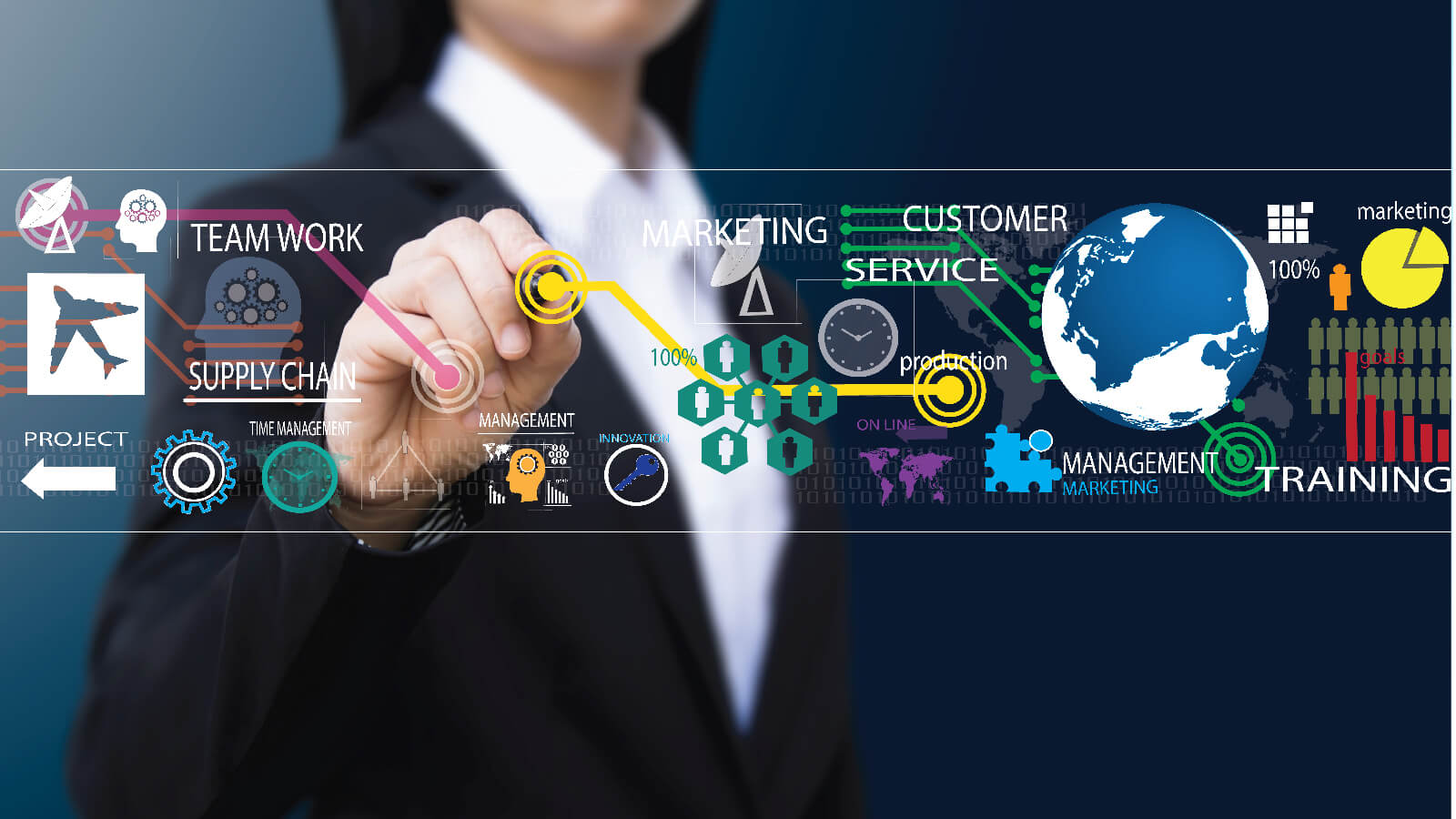
Strong supplier relationship management (SRM) entails a structured approach to evaluating diverse vendors and their strategic importance to the firm. Firms can configure successful supplier relationship management by adopting the following strategies:
Segment Your Suppliers Per Their Relative Importance
- Supplier segmentation, i.e., the practice of classifying suppliers into different categories based on their strategic importance to the firm is the most fundamental step of effective supplier management.
- Generally, managers default to the Kraljic Matrix for undertaking supplier segmentation. It assesses suppliers on their profitability and risk, classifying dealers with a high-profit impact and higher risk as strategic and relegating others as transactional.
- Alternatively, you can also opt for the Pareto principle, which necessitates that 20% of suppliers must account for 80% of buyers’ spending.
- Essentially, the goal is to direct your resources to the suppliers with the highest impact.
Create A Supplier Management Framework
- To foster solid collaborative relationships, firms must design a governance framework, which clearly defines the goals, objectives, and responsibilities of both the suppliers and the buyers.
- Clear communication lines should also be established to ensure all parties are on the same page at all times.
- Moreover, you must develop detailed contracts that clearly outline your expectations about quality parameters, lead times, and payment terms.
- Finally, you should have a risk management plan in place to help tide over unforeseen circumstances, such as supply chain obstructions (like COVID-19) or supplier failures.
Establish KPIs for Monitoring Supplier Performance
- The key to efficacious supplier performance management lies in establishing key performance indicators (KPIs), such as defect rates, order accuracy, cost savings, etc.
- These KPIs can vary per segment and must be continuously monitored to remain cognizant of any supply chain risk (cue-Suez canal crisis).
- You can, additionally, arrange periodic meetings at various executive levels to discuss strategy and goals, track performance, and clear roadblocks.
Be A Good Customer, Pay Your Suppliers on Time
- Supplier relationship management is not exclusively restricted to what suppliers can and should do for you.
- It also entails buyers keeping their end of the bargain by making payments as per the agreed terms.
- Firms must strive to pay on time unless constrained by exigencies—in which case, effectively communicating your limitations is the path to tread.
Leverage Technology for Better SRM
- Tech-driven solutions, like SRM software, aid supplier management by offering a comprehensive overview of suppliers and their risks.
- They can further augment your supply chain and digitize procurement by automating daily operations, simplifying onboarding, and providing extensive inventory management visibility.
Unlock the Potential of Your Supplier Relationships with Moglix
Effective supplier relationship management is indispensable for firms looking to cut costs, improve bottom lines, and add value to their supplier relationships. And Moglix is the perfect go-to collaborator that can help you achieve this and more—as it has done already for an automotive OEM.
Moglix’s supplier consolidation solution assisted the OEM in resolving the difficulties of a fragmented supplier base, bad credit terms, and working capital blockages, resulting in a colossal 2% cost savings! Download the case study to learn the finer details.
Additional resources:
2. https://procurementleaders.com/content/supplier-collaborations-success-research
Demystifying the Procure-to-Pay Cycle: A Quick Guide
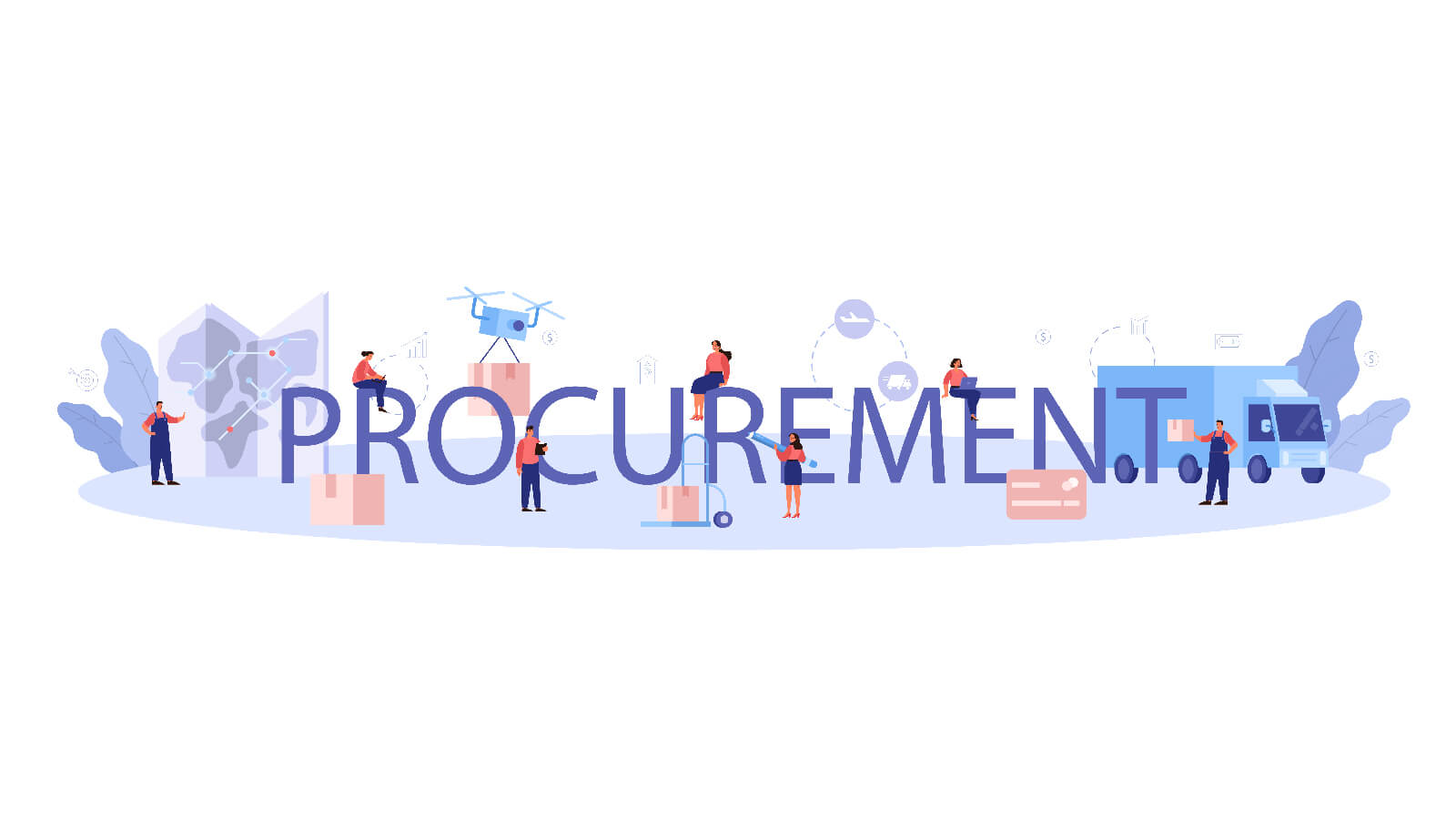
Demystifying the Procure-to-Pay Cycle: A Quick Guide
With the rise of digital technologies such as automation, and advanced analytics, procurement operations are undergoing a transformation. In fact, the global software market will be worth $9.5 billion by 2028(1).
A recent study(2) shows that almost half of all procurement activities can be automated using existing technologies. One such process that has the potential to greatly benefit from these advancements is the Procure-to-Pay (P2P) process.
But is the P2P process relevant for your company? If yes, how can it benefit you in the long run? Continue reading as we explore the procure-to-pay process in detail and answer your questions.
Decoding the Procure-to-Pay Process
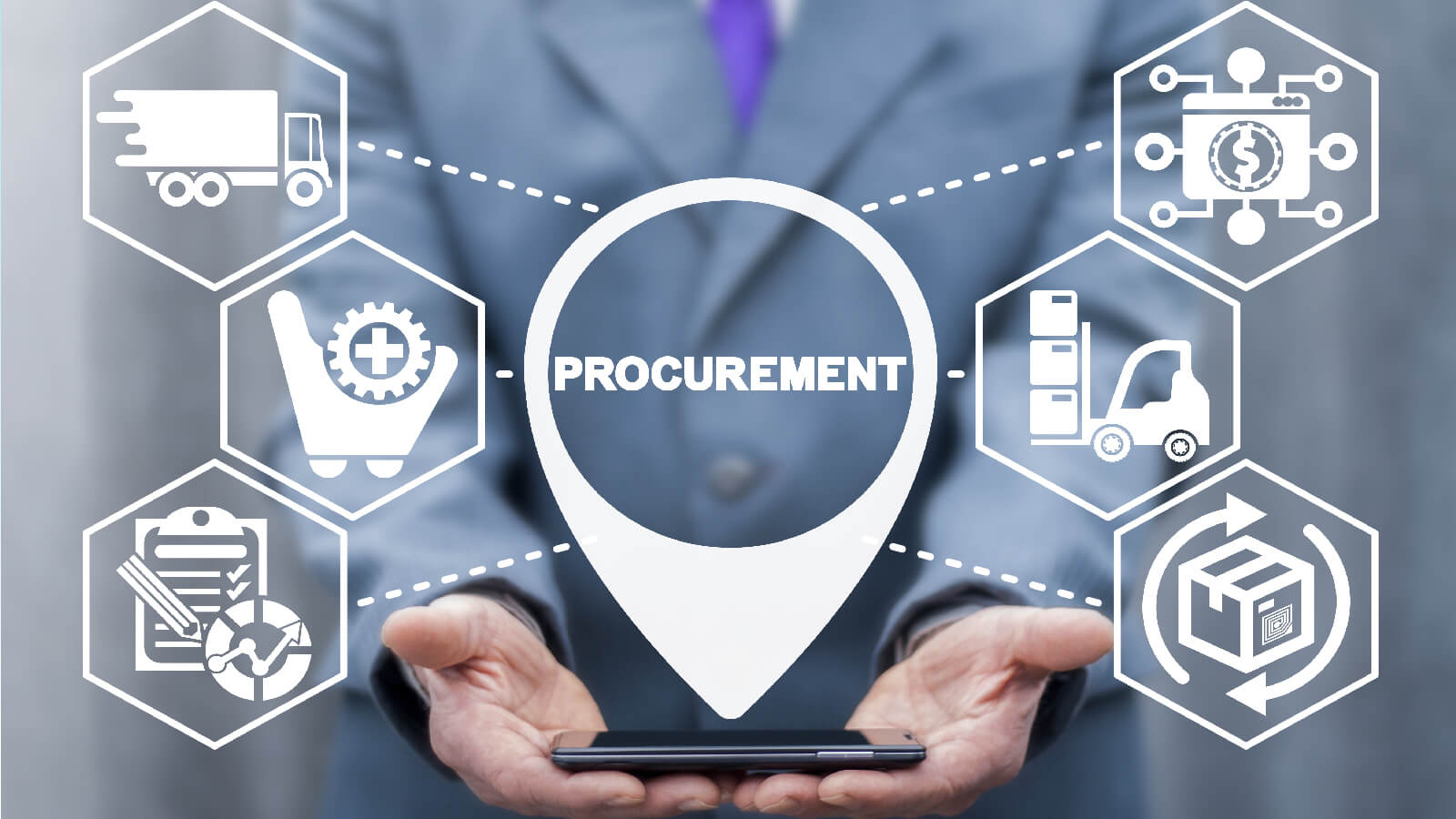
Procure-to-Pay encompasses activities and tasks, such as sourcing, procurement, invoicing, and payment, which come together to form the P2P cycle.
The P2P process is typically managed by a procurement or purchasing department, designed to ensure that the organization purchases goods and services promptly and cost-effectively while maintaining control over spending.
It starts with the identification of a business need and ends when you make the payment to the supplier. Effective management of the P2P process helps ensure you pay the right amount for the right goods or services at the right time. This improves your relationship with your suppliers and overall financial visibility and control.
The process involves several steps that come together to form the P2P cycle, which we will explain in the next section.
Steps Involved in the Procure-to-Pay Cycle
The P2P cycle steps include requisition and approval, purchase order creation and confirmation, goods and invoice receipt, invoice approval, payment, and close-out. Let’s dive into these steps and see what they actually are.
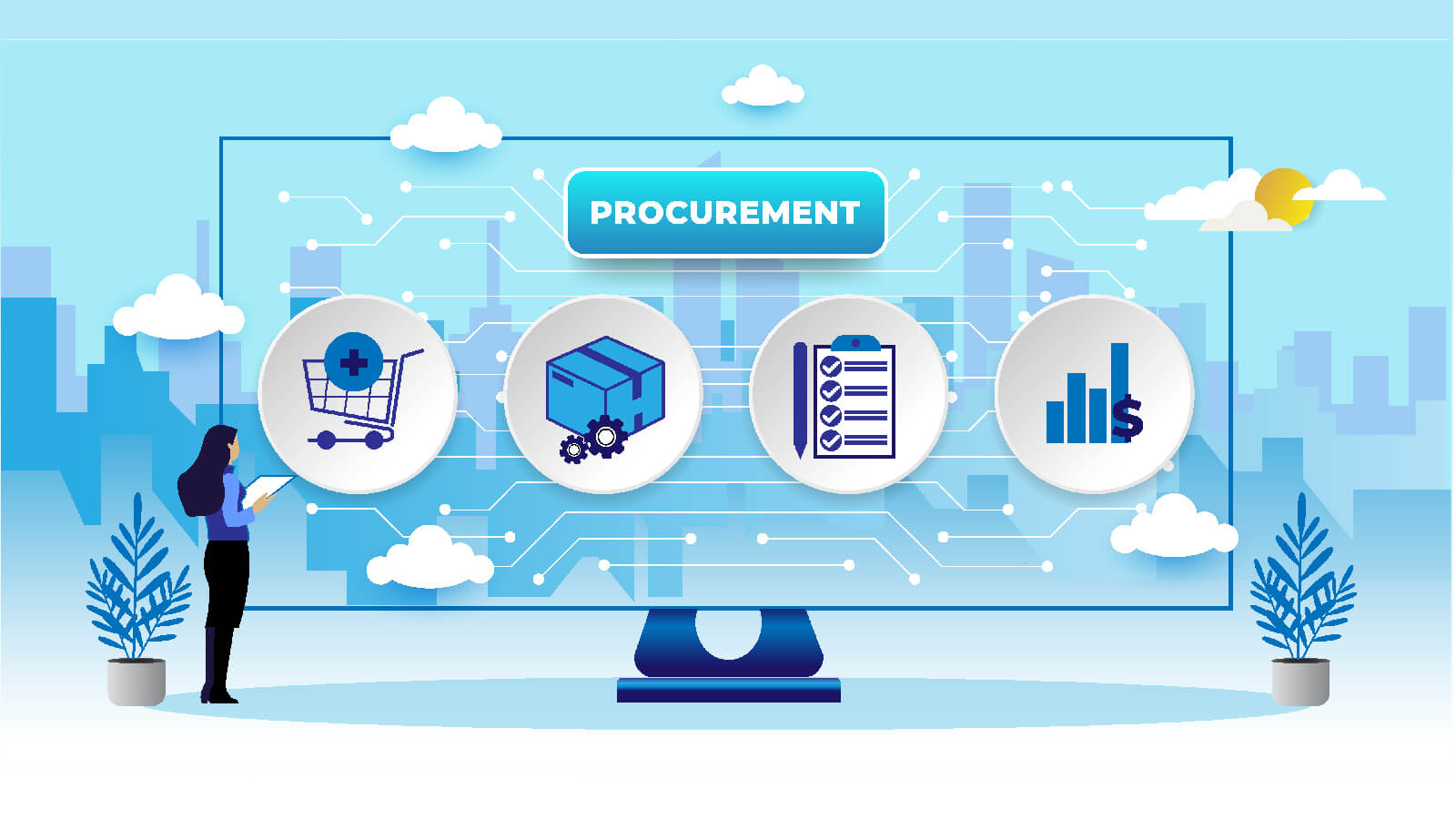
Get the Go-Ahead
The P2P cycle begins when a need for goods or services is identified. The request for the product is usually identified using an enterprise resource planning (ERP) system or procurement management software. The request is then reviewed and approved by the management.
Seal the Deal
After approval, the procurement team identifies potential suppliers. It evaluates its capabilities based on product quality, delivery times, and prices.
At this stage, the most suitable supplier is selected based on price quotations and the required product specifications. The supplier is usually given confirmation via a confirmation email.
Then, a purchase order (PO) is created and sent to multiple suppliers via either procurement software or an ERP system. A PO is a legal contract between an organization and its supplier, and contains the details of the product required, the delivery date, and the expected price.
Time for Delivery
The goods or services are received from the supplier, and the receiving department confirms that the items match the specifications in the purchase order.
Double Check for Accuracy
The supplier invoices the organizations after the receipt of the goods, including details such as the amount owed and payment terms.
The finance department verifies the invoice against the purchase order and approves it for payment. They may use invoice management software or ERP to ensure the invoices match the PO. If not, the discrepancies are resolved at this stage.
Pay Like a Pro
Finally, the supplier is paid for the products via a payment management system or ERP. The payment process is usually transparent, secure, and compliant with the organization’s financial policies.
At this stage, the procurement team often follows up with the supplier to ensure all aspects of the transaction have been completed. Then the order is closed out.
As the organization’s size increases and the processes become more complex, companies use various tools and software like procurement management software, ERP systems, and invoice management software to automate and streamline the P2P cycle. This makes the P2P process much more efficient and reduces the risk of errors.
Benefits of the P2P Process
The purchase-to-pay process is not intended to speed up payments to vendors. Rather, its goal is to improve the efficiency and financial control of the company. Some benefits of a P2P process cycle are as follows:
- It streamlines the procurement process by connecting the different departments in a firm, making all points of information trackable.
- A P2P process, when implemented using a procurement solution, can help reduce invoice processing costs and improve efficiency.
- The process makes communication between vendors and companies transparent, improving their relationships.
- When suppliers know payment schedules and details, they will be more open to accepting terms that are more beneficial to buyers.
P2P is the Future of Procurement Solutions
The majority of procurement teams are feeling pressured to respond to challenges quickly and effectively. While the complexity of the process can be daunting, there are solutions available that can help organizations streamline and optimize their procurement processes. The P2P process is a critical function that requires careful management and attention to detail, particularly for large enterprises.
For example, the case study of one of India’s largest infra developers shows how a business can scale up its turnover growth by 2x in just a year by implementing an end-to-end P2P solution. By leveraging the right procurement tools and technologies, businesses can not only reduce costs and minimize risk but also achieve significant business outcomes.
So, whether you are using manual or semi-automated tools, it’s worth considering how a comprehensive P2P solution can improve your procurement process and boost your bottom line. Or, you can even partner with companies like Moglix, which specialize in providing end-to-end procurement solutions to businesses.
Additional resources:
Manufacturing Success: Why Women Workplace Safety is Non-Negotiable
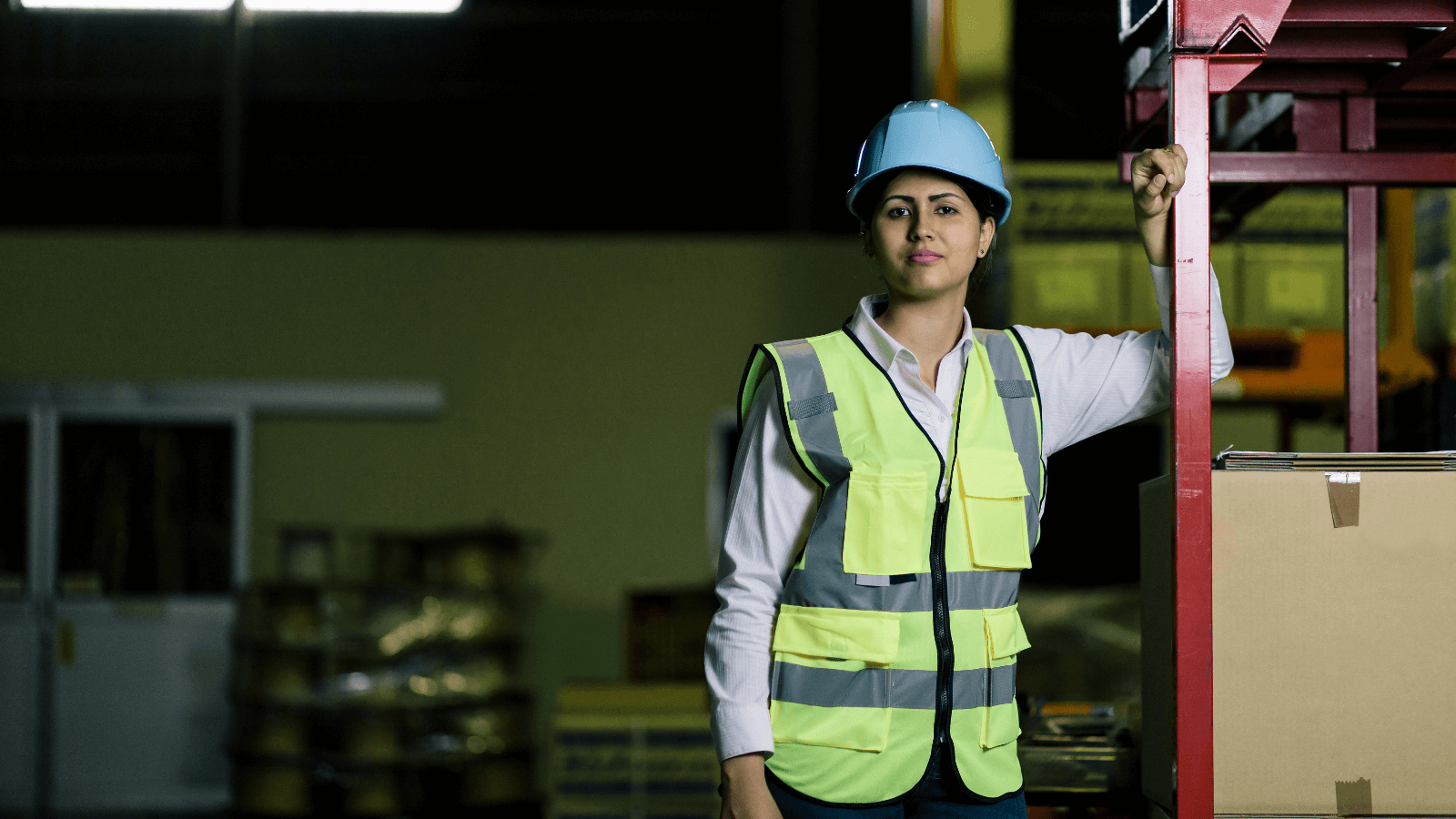
Manufacturing Success: Why Women Workplace Safety is Non-Negotiable
As we celebrate National Safety Week (from 4th to 10th March) & International Women’s Day (on March 8th), it is time to reflect on the challenges women face in the workplace with something as rudimentary yet non negotiable as workplace safety. Women have traditionally been confined to conventional roles, which has prevented them from realizing their full potential. However, there has been a shift towards more women joining the workforce, and they will play a critical role in India’s growth story. According to a study by McKinsey, advancing women’s equality in India could increase GDP by $770 billion by 2025.
Despite the increasing number of women in the workforce, women’s participation in the male-dominated manufacturing sector remains low. In 2019-20, of the 8 million workers employed in India’s formal manufacturing industries, only 1.6 million (19.7%) were women(2). This highlights the need to encourage more women to consider manufacturing a viable career option. The manufacturing sector has the potential to empower women economically and socially, but this can only happen if they are safe at work.
Unsafe and Unheard: Women’s Struggle for Safety in Manufacturing Facilities
Despite making strides in breaking gender barriers, women in the manufacturing sector face significant challenges. Safety is a primary concern for women working in these facilities. Unfortunately, they are often subject to sexual harassment, discrimination, and violence. In many cases, these facilities may not have sufficient training programs, safety equipment, or procedures to ensure women can operate safely. This can lead to severe injuries and create a sense of insecurity among women.
The effects of these challenges extend beyond physical safety, impacting women’s mental health and overall well-being. It is crucial to prioritize safety measures and address these issues to create a safer and more inclusive work environment for women in manufacturing.
Breaking Barriers: India’s Fight for Gender Equality in Manufacturing
Recognizing the challenges faced by women in manufacturing, the Indian government has implemented measures to ensure their safety. For example, the Sexual Harassment of Women at Work Place (Prevention, Prohibition and Redressal) Act, 2013 (POSH Act) mandates the creation of committees to investigate complaints of sexual harassment and requires companies to provide a safe working environment for women. Alongside this, the Ministry of Women and Child Development has launched initiatives promoting gender equality in the workplace.
But it’s more than just the government taking action. Private sector companies are also implementing measures to ensure women’s safety. Gender-sensitive policies such as sensitization workshops and mandatory employee training have been established alongside committees to address complaints of sexual harassment. These efforts have made manufacturing facilities safer and more welcoming for women, empowering them to pursue their careers confidently.
Manufacturing a Better World: Women’s Empowerment through Safety
Women are crucial to the growth of India’s manufacturing sector, and their safety is vital to their success. While there have been significant challenges, positive steps have been taken to ensure their safety. However, we must continue to work towards creating a safe and inclusive workplace for women in manufacturing facilities. At Moglix, we are committed to the cause of women’s safety in the workplace and offer comprehensive safety solutions (products & services) specifically crafted for women at workplace. Contact us today and partner with us to build a safer environment for women.
From Fatalities to Foresight: How India is Tackling Workplace Hazards Head-On
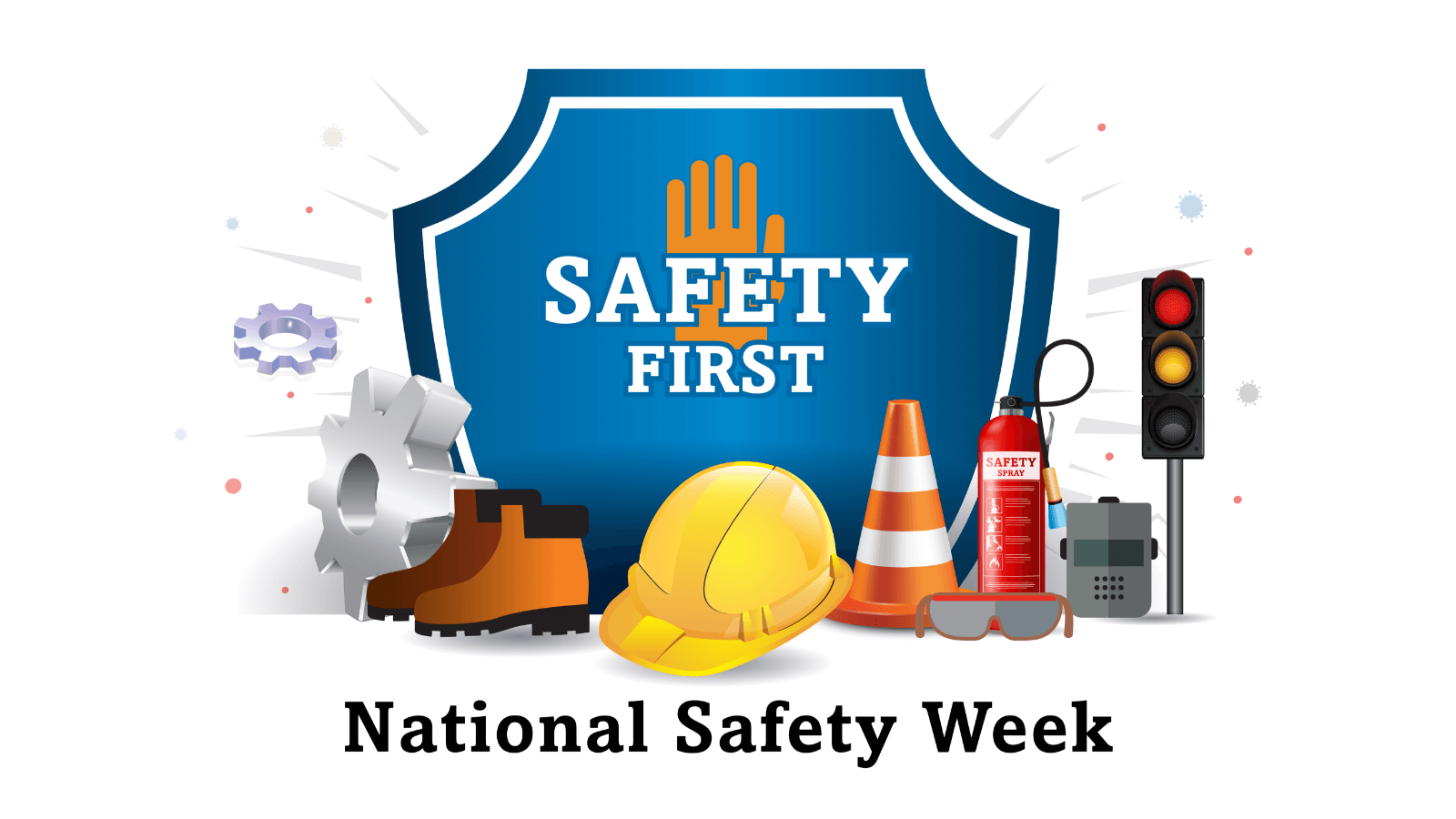
From Fatalities to Foresight: How India is Tackling Workplace Hazards Head-On
The significance of ensuring workplace safety cannot be overstated, as it not only enhances the prosperity of businesses but also promotes the well-being of employees. In India, a nation with a burgeoning economy and an enormous workforce, industrial safety holds a particularly critical position.
The problem of industrial safety is evident from the numbers. According to data from the Directorate General Factory Advice Service & Labour Institutes (DGFASLI)(1), there were 1,050 fatal workplace injuries in the year 2020, which translates to an average of nearly 3 deaths per day.
Despite laws aimed at safeguarding workers and promoting occupational safety, their effectiveness is often limited by a prevailing cultural attitude towards workplace safety that hinders proper implementation. Thus, there is a need to adopt a multifaceted solution that considers regulatory compliance and improves safety culture, including the attitudes, beliefs, and values that shape workplace behavior.
From Crisis to Consciousness: How India is Ushering in a New Era of Industrial Safety
It was only after independence that India got the opportunity to take measures to improve industrial safety. The Factories Act of 1948 was India’s first major legislation on industrial safety. It aimed to ensure factory workers’ safety, health, and welfare. Subsequently, several amendments were made to make it more comprehensive and practical.
In 1984, the Bhopal gas tragedy killed thousands, highlighting the need for more robust safety measures in industries. This led to the Environment (Protection) Act 1986, which aimed to protect and improve the environment and prevent hazards to human beings, other living creatures, plants, and property.
The National Safety Council (NSC), established in 1966 by the Ministry of Labour and Employment, has actively guided and provided services to promote safety awareness and safe work practices. In recent years, there have been focused efforts by organizing safety campaigns to address the root cause of workplace hazards, which often lies in a lack of awareness and education.
The NSC’s National Safety Week campaign is a crucial contributor to creating safety awareness and establishing safety standards across all sectors. The week-long campaign commences on March 4th of every year. It encourages employers to involve their employees in Safety, Health, and Environment (SHE) activities, thereby promoting workplace behavior and hazard prevention improvements by both employers and workers.
Beyond Compliance: How Technology and Specialized Services are Shaping Industrial Safety Culture in India
Besides legislative and institutional measures, technological advancements have also significantly enhanced industrial safety in India. For instance, the emergence of Industry 4.0, focusing on automation, machine learning, and the Internet of Things, has led to the development of more innovative and safer industrial systems.
Furthermore, various private and public organizations have emerged in recent years to provide specialized services in industrial safety. These organizations offer training, certification, and consulting services to businesses and individuals on various aspects of workplace safety, such as hazard identification, risk assessment, and emergency response.
Ensuring Workplace Safety: The Key to Sustainable and Inclusive Growth in India
Industrial safety is and will have to be a critical aspect of India’s growth story, and efforts to improve it should be a priority for all stakeholders. Moreover, the COVID-19 pandemic has brought to the fore the need for a more comprehensive approach to workplace safety that includes not just physical hazards but also biological ones.
As India continues to pursue its path of economic growth, it is essential to ensure that this growth is sustainable and inclusive and that workplace safety is an integral part of it. At Moglix, we recognize the need for a safety-conscious workforce and offer comprehensive safety solutions to create a safer work environment. Contact us today and partner with us to build a safer and more sustainable India.
What are the Opportunities for MSMEs and Exporters from the Union Budget of India in 2023?
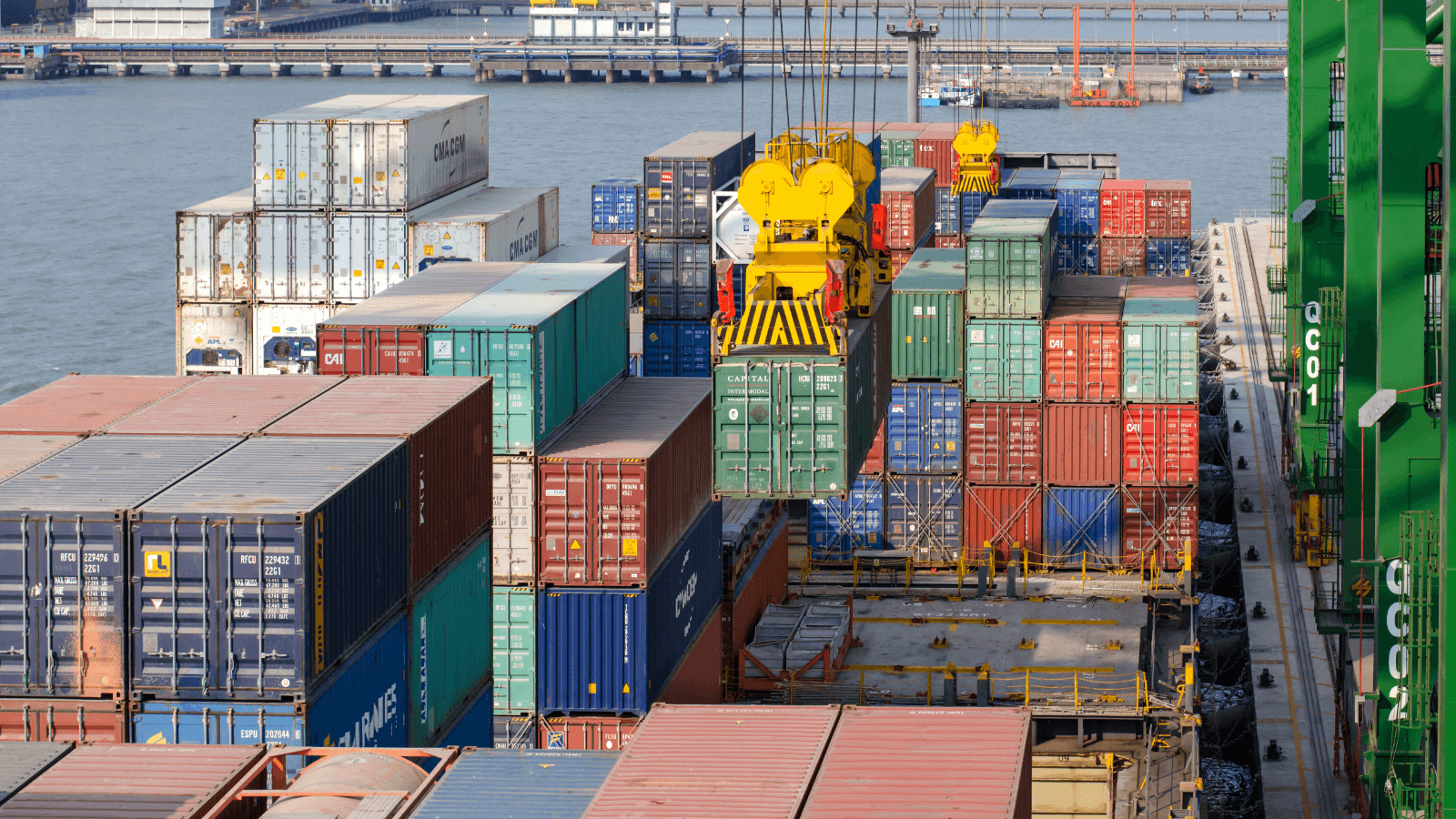
What are the Opportunities for MSMEs and Exporters from the Union Budget of India in 2023?
The union budget for 2023 is here. What does this year’s union budget have for MSMEs and exporters? We walk you through some of the major fiscal outlay provisions and opportunities for MSMEs and exporters here.
Some of the key opportunities for MSMEs and exporters from the budget include:
1. Allocation of Fiscal Outlay for MSMEs in the Union Budget for 2023
The government has proposed an allocation of Rs. 15,700 crores for MSMEs in 2023.
The outlay in this year’s union budget is a significant increase from the previous year. One of the highlights of this increased outlay is the sharp surge in capex.
2. Ease of Doing Business and Simplification of Compliance for MSMEs
The union budget for 2023 has several measures for simplifying compliance for MSMEs and exporters. Of these, the simplification of the Goods and Services tax (GST) regime is a significant step towards augmenting the ease of doing business.
Not only will it lead to a reduced tax burden, but is also likely to reduce staff hour engagements into maintaining data trails manually and filing for input tax credits.
3. Corpus of INR 5000 Crore for MSMEs to Enable Access to Credit
One of the biggest pain points for Indian exporters is the short shelf life of export opportunities. The global market is getting flatter and customers have a plethora of choices for importing goods.
Indian exporters, especially MSMEs need credit on-demand to purchase raw materials and intermediate goods to process purchase orders. There is a definite mandate for agile supply chain finance for exporters and MSMEs.
To solve this pain point, the union budget 2023 has a provision for a corpus of Rs 5000 crore. The corpus will be uses to provide collateral-free debt to MSME exporters and MSMEs that are active in the domestic trade circuit.
4. Export Promotion Measures to Integrate MSMEs with the Global Supply Chain
The honorable FM has introduced several measures for export promotion in the union budget for 2023. Of the several measures, the one that deserves special mention is the setting up of a corpus worth Rs 20,000 crore to support export-oriented MSMEs.
5. Infrastructure Development to Boost MSMEs and Exporters
The government has proposed several measures to improve infrastructure in the union budget for 2023 to promote MSMEs and exporters. These include the development of local industrial parks and clusters. Such clusters and manufacturing zones will provide MSMEs with access to basic amenities like real estate, electricity, and logistical and digital connectivity.
Learn about the detailed analysis of opportunities and procurement and supply chain recommendations for CEOs, CFOs, CTOs, and CPOs of MSMEs and exporters in the e-book: “Union Budget 2023; The Decision Maker’s Vantage Point”.
What are the Opportunities for Infra Companies Emanating from the Union Budget of India in 2023?
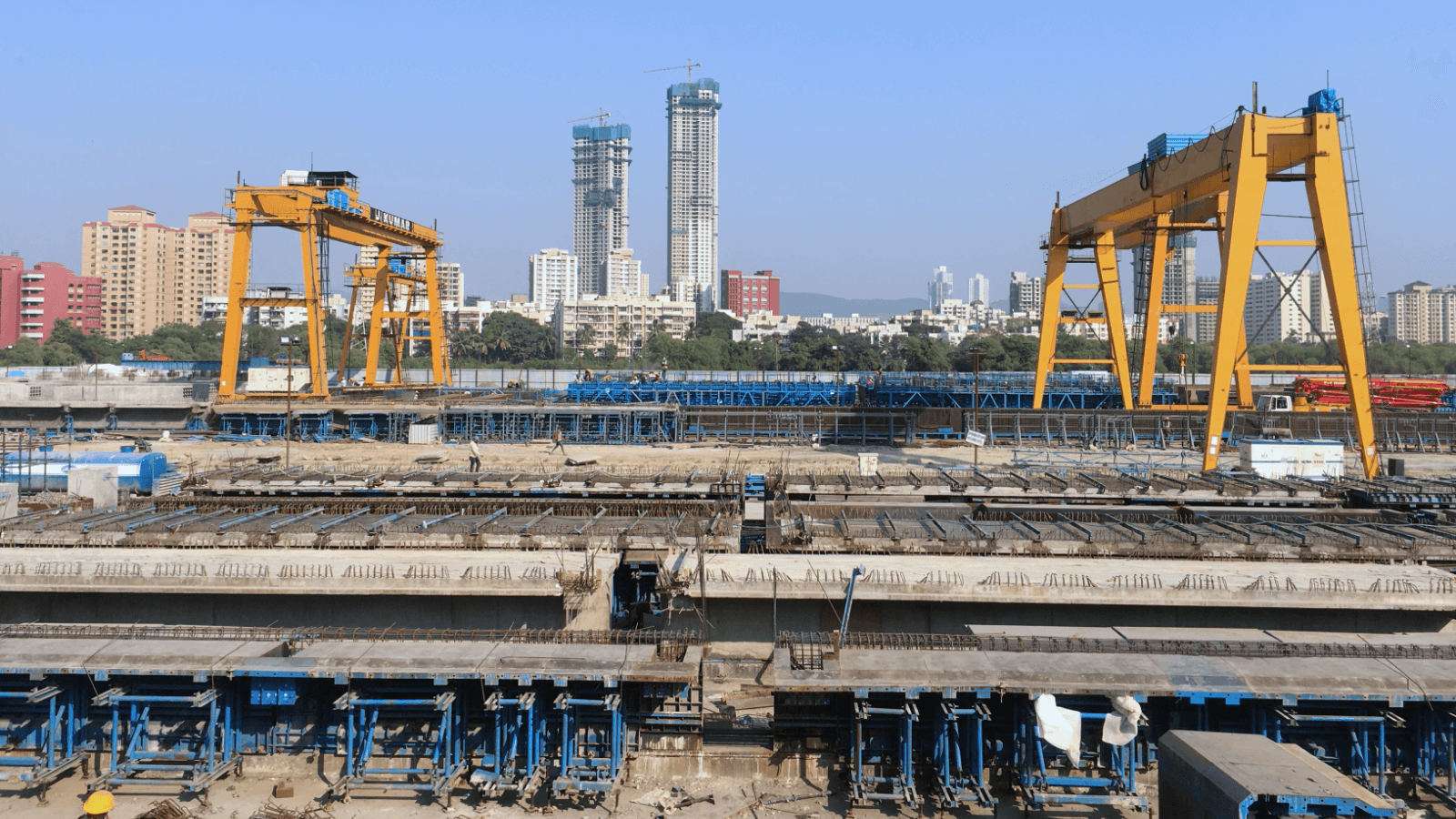
What are the Opportunities for Infra Companies Emanating from the Union Budget of India in 2023?
The Union Budget of India for 2023 is here. The honorable FM has announced several measures which are aimed at boosting infrastructure development in the country. We walk you through some of the opportunities for infrastructure EPC companies, which are as follows:
1. Increased Capex Allocation for Building India’s Infrastructure
The highlight of this year’s union budget is the mega capex push worth INR 5.54 lakh crores. The capex allocation represents an 11% hike over last year.
The capital expenditure will provide opportunities to EPC companies to participate in new infra projects and secure contracts under the auspices of the National Infrastructure Pipeline.
2. Focus on Infrastructure Development in Tier 3 Cities and Rural Areas
The government has announced several measures to enhance rural infrastructure, including the creation of a rural infrastructure development fund and the development of rural industrial clusters. This presents opportunities for EPC companies to participate in projects aimed at improving rural infrastructure.
3. Outlay of INR 2.5 Lakh Crore for the Development of Roads and Highways
The union budget has emphasized the importance of road and highway development, with a target to construct 40 km of roads per day. The outlay of INR 2.5 lakh crores for roads and highways is expected to create opportunities worth INR 1.8 lakh crores for project developers and those worth INR 0.7 lakh crores for MRO solutions providers.
4. Expansion of Port & Terminal Infrastructure Under the Union Budget
India already has an active and operational policy framework for the development of ports and terminals called the “Bharatmala Scheme”. This year’s union budget makes a capex outlay of INR 1608 crores for the development of ports & terminals. This presents opportunities for infrastructure companies to participate in port development projects.
5. Climate Action and Shift Towards Green Manufacturing and Renewable Energy
The union budget for 2023 marks the beginning of India’s pivot towards green manufacturing and renewable energy. The outlay on green hydrogen alone is INR 35,000 crores. This presents opportunities for infrastructure companies to participate in renewable energy projects.
Overall, the Union Budget of India for 2023 presents a range of opportunities for infrastructure companies looking to participate in the development of physical infrastructure in the country.
Explore the detailed analysis of opportunities in the National Infrastructure Pipeline and procurement and supply chain recommendations for CEOs, CFOs, CTOs, and CPOs of EPC project developers and sub-contractors in the e-book: “Union Budget 2023; The Decision Maker’s Vantage Point”.
What are the Opportunities for Equipment and Heavy Fabrication Emanating from the Union Budget of India in 2023?

What are the Opportunities for Equipment and Heavy Fabrication Emanating from the Union Budget of India in 2023?
The Union Budget of India for 2023 is likely to offer several opportunities for equipment and heavy fabrication solution providers. Here are a few key areas where growth and investment could be expected:
1. Opportunities for Equipment & Heavy Fabrication in the National Infrastructure Pipeline
Since 2021, India is on an infrastructure-building spree. The National Infrastructure Pipeline is the Government of India’s marquee policy scheme with EPC projects worth a staggering outlay of INR 1,08,17,449 crore.
This could create opportunities for equipment and heavy fabrication solution providers in the construction and engineering industries.
2. Opportunities for Fabrication Solutions in the Defense Sector
India has a large defence sector. The union budget in the succeeding years could potentially allocate more funds towards defence equipment and modernisation, which could create opportunities for heavy fabrication companies to supply equipment to the defence sector.
3. Opportunities for Fabrication Solutions Under the “Make in India” Campaign
The government’s focus on boosting the manufacturing sector and making India a hub for global manufacturing could lead to increased demand for heavy fabrication solutions, as new factories and industrial units will require various equipment and machinery.
4. Opportunities in Renewable Energy Sector and Green Manufacturing
The union budget in 2023 has dedicated a fiscal outlay of INR 37,000 crores on renewable energy. The budgetary allocations are in line with the honourable Prime Minister’s calibrated approach to transition Indian manufacturing towards net zero carbon emissions by 2070.
Green manufacturing and uptick in demand for renewable energy can unlock new opportunities for India’s renewable energy sector. For instance, India has a competitive cost advantage in solar energy which has got a budgetary outlay of INR 10,000 crores in the union budget 2023.
The Green Hydrogen sub-sector is yet another avenue that holds promise. It has got an outlay of INR 19,000 crores under the National Green Hydrogen Mission and another INR 16,000 crores under the union budget for 2023.
Overall, the Union Budget of India for 2023 could offer significant growth opportunities for equipment and heavy fabrication solution providers, particularly in the areas of infrastructure development, defense, manufacturing, and renewable energy.
Access the detailed analysis of the opportunities to make in India and procurement and supply chain recommendations for CEOs, CFOs, CTOs, and CPOs of equipment manufacturing and heavy fabrication solution providers in the e-book: “Union Budget 2023; The Decision Maker’s Vantage Point”.
